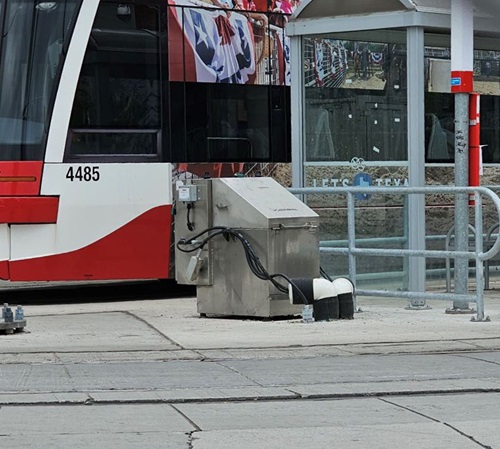Streetcar Noise and Vibration
Streetcar Noise
Streetcar noise is a by-product of rail transit operations, mainly along curves throughout the network. In addition to basic operations, other factors can influence noise levels.
Weather and Effect on Noise
Temperature swings at various times of the year may affect the interaction between the wheels and the rails, the drying period after precipitation, and humidity levels.
During the drying period after precipitation, the lubricant needs to build up to be effective, which will take time for lubrication to re-establish itself through curves. The time is dependent upon the number of streetcars operating along any particular route, the number of streetcars equipped with the on-board lubricant system and individual site conditions.
TTC Mitigation Tools
While there is no known system that can completely eliminate noise in all operating scenarios, the TTC in its continuing efforts to reduce squealing noise at curves throughout the entire streetcar network deploys several mitigating technologies:
- Wayside / in-ground lubricators
- On-board GPS activated lubrication system.
- Noise dampening rings
- Regular Inspections and Maintenance
Wayside / In-ground Lubricators
In-ground lubricators are commonly installed at off-street TTC loops in an effort to mitigate streetcar screeching and squealing through the curves. The intent is for lubrication to be dispensed in intervals and tracked around the loop. Maintenance inspections are conducted regularly.

For safety, in-ground lubricators are not commonly installed in areas of mixed-traffic for safety.
On-board Lubrication System
Over 100 low floor streetcars acquired by TTC are equipped with an on-board lubrication system. When activated, a controlled amount of lubricant is applied to the streetcar wheels prior to turning through a curve, including curves in mixed traffic. While not all low floor streetcars are equipped with the onboard system, the intent is for the lubricant to track along curves and leave a fine film of residue.
Noise Dampening Rings
In addition to the two lubrication systems, other advancement has been explored by TTC to help further reduce noise levels. Currently, TTC is investing in additional noise-dampening rings for low-floor streetcars. The rings work on the principle of counterbalancing the frequency of the high pitch sound that may also occur during periods of squealing by turning streetcars.